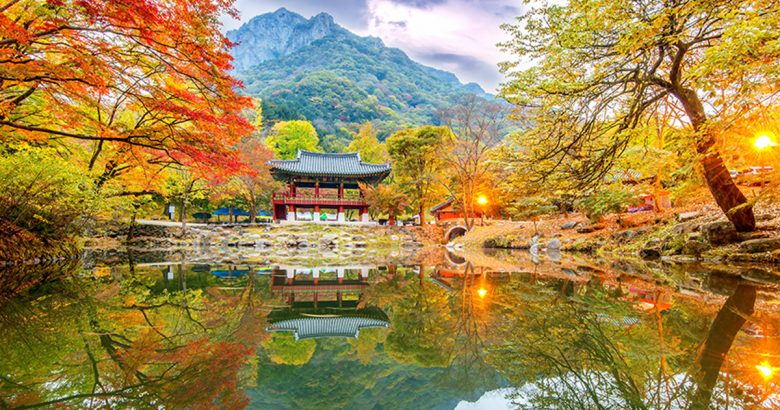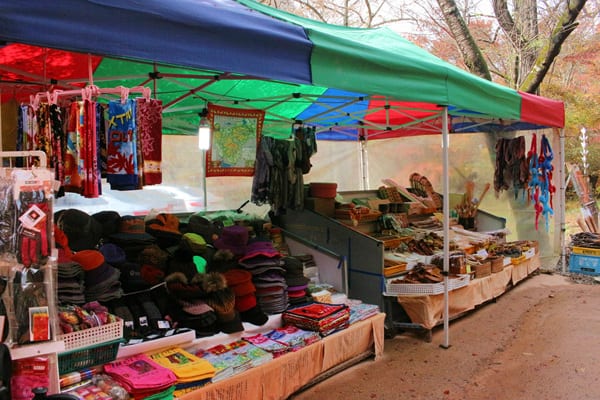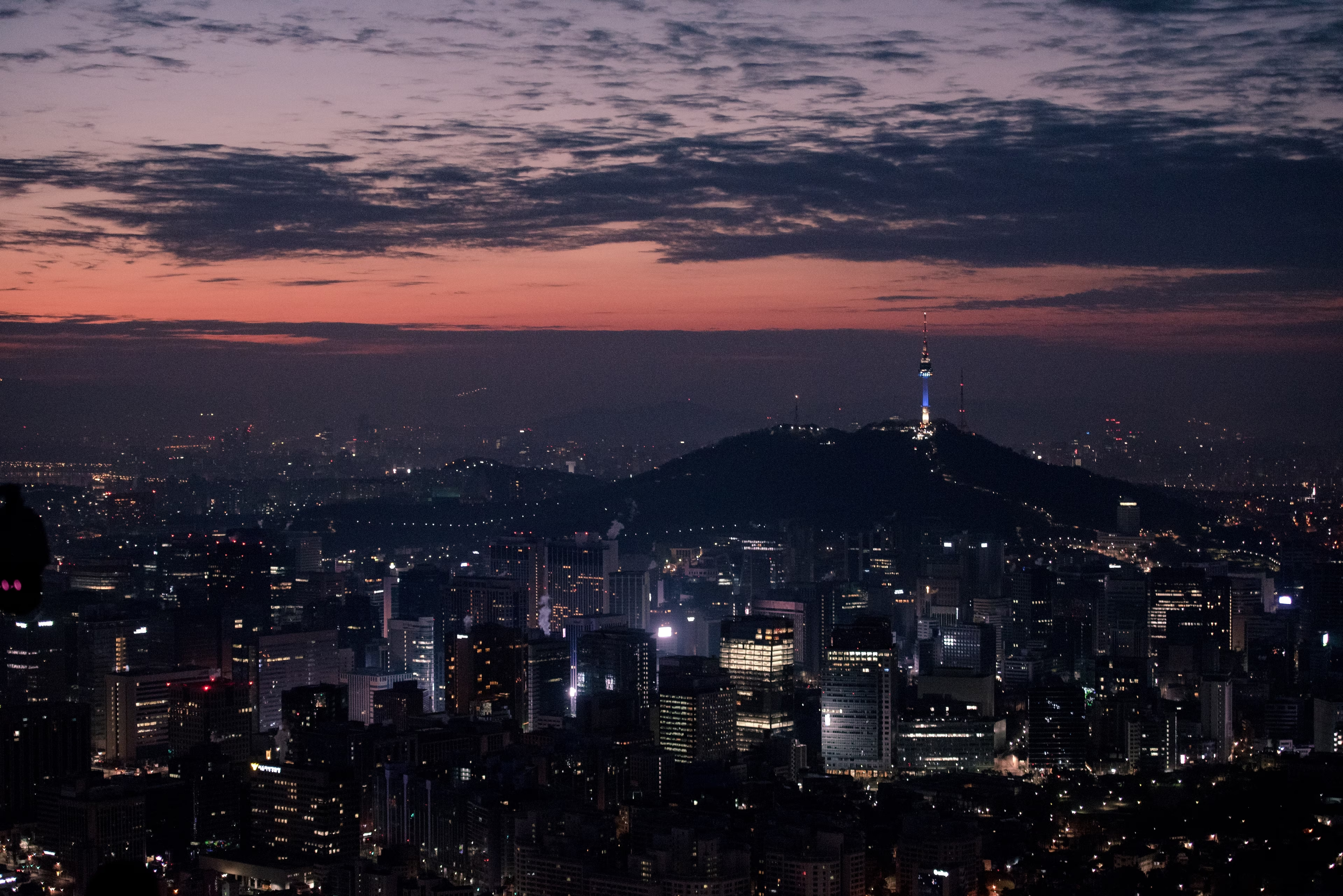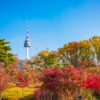Discover Our Travel Insights: Naejangsan National Park – A Premier Korean Fall Foliage Destination!
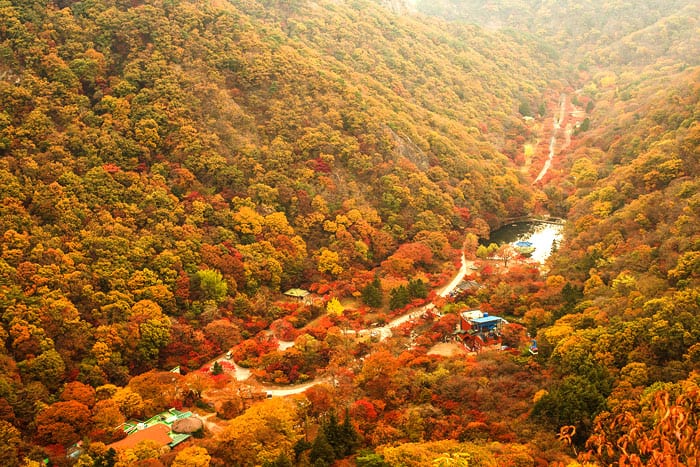
Embrace the Splendor of Korean Autumn: Naejangsan National Park Foliage Experience
The arrival of cool, crisp autumn weather in Korea signals the perfect time for a visit. This season gifts us with breathtaking displays of vibrant fall colors, and among the most beloved destinations for foliage enthusiasts is Naejangsan National Park.
For those unfamiliar with the wonders of Naejangsan National Park, this post chronicles my unforgettable autumn foliage adventure during Trazy’s one-day tour. Typically, the prime months for experiencing this enchanting foliage are October and November. To ensure you don’t miss out on Korea’s awe-inspiring autumn scenery, it’s advisable to plan your leaf-peeping getaway well in advance!
About Naejangsan National Park
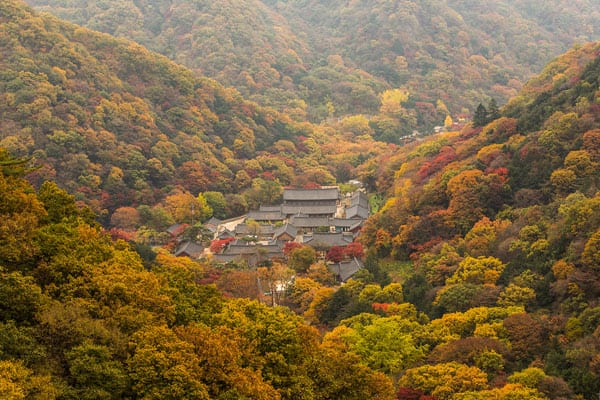
Introducing Naejangsan National Park: A Jewel in Southwestern Korea
If you’re just now discovering this captivating natural gem, Naejangsan National Park graces the landscape with the majestic presence of Mount Naejang, a Korean mountain renowned for its scenic beauty. Nestled in the heart of South Korea, this park is located near the city of Jeong-up, within North Jeolla Province (Jeollabuk-do), in the southwest region of the country.
What sets Naejangsan apart is its striking crimson foliage, ancient nutmeg trees that have stood the test of six centuries, and enchanting waterfalls that dot the landscape. The park also boasts two notable Buddhist temples, Baekyangsa Temple and Naejangsa Temple. For visitors seeking an unforgettable experience, the tree-lined path leading from the Hiking Information Center to Naejangsa Temple is nothing short of a pilgrimage, as it unfolds beneath a breathtaking canopy of vibrant autumn leaves.
While autumn is undoubtedly the park’s zenith, Naejangsan National Park reveals its splendor in every season. Spring welcomes a bloom of azaleas and cherry blossoms, summer cloaks the mountain in verdant lushness, and winter transforms the rock cliffs into a stunning snowy spectacle.
How to go to Naejangsan National Park
- Train Travel: Begin your journey by taking the KTX from Yongsan Station to Jeong-eup Station. From there, you’ll need to catch a local bus to reach Naejangsan National Park. It’s worth noting that this method may be somewhat intricate for first-time travelers. KTX train tickets can be on the pricey side, averaging around 40,000 KRW (approximately 39 USD), and they tend to sell out quickly, especially during the high-demand fall season in Korea.
- Car Journey: For those who prefer the freedom of driving, it’s roughly a 3 to 4-hour drive from Seoul to Naejangsan National Park. However, do keep in mind that on weekends or during peak seasons, the journey may extend further due to increased traffic. Arriving early in the morning is a wise strategy to ensure smooth access to the mountain and a leisurely exploration experience.
- Guided Tours: To eliminate the hassle of transportation and navigating your way to the park, consider joining a fall foliage tour provided by Trazy. These tours not only take care of your travel logistics but also include the park’s admission fee, the assistance of an English-speaking tour staff, a light breakfast, and a complimentary bottle of water. It’s an excellent option for a stress-free and enriching visit to Naejangsan National Park.
Here’s How Dynasty Korea Fall Foliage Tour Goes…
Journey from Seoul to Naejangsan National Park:
The tour commences at Hongik University Station, with the bus departing at 6:00 a.m. If you’re not located there, fret not; other pick-up options are available. Myeongdong Station is the next stop at 6:30 a.m., followed by Dongdaemun History & Culture Park Station at 6:40 a.m. As you journey towards your destination, there’s a convenient rest stop en route, allowing you to freshen up and grab some snacks.
The tour bus will roll into Naejangsan National Park by approximately 10:30 a.m., granting you the freedom to explore the park at your own pace from this point onward.
If you opt for one of the less demanding trails, you’ll encounter minimal steep inclines or challenges. Starting from the parking area, a brief, 5-minute shuttle bus ride transports you to the ticket booth.
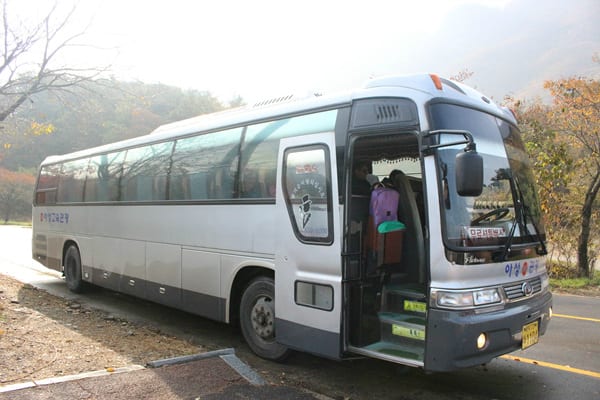
Upon arrival, the English-speaking tour staff will provide you with the entrance ticket. From there, you’ll hop onto another shuttle bus that will transport you to the National Park’s entrance. It’s worth noting that all hiking courses commence and conclude at this entry point, where the ticket booths are conveniently located.
The bus fare is already included in the tour package, so you won’t need to spend time waiting in the ticket line. While the first shuttle was spacious, the second one might be smaller and slightly more confined, but this should pose no issue as the ride is rather brief.
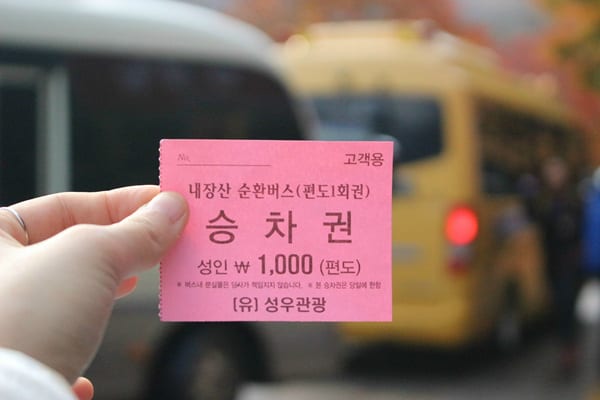
Despite the early hour of 11 am, the trails were bustling with hikers and tourists. Along the way, you’ll encounter the sign depicted in the image below. To the left, there’s the option of taking the cable car, which incurs an extra fee, and it’s a mere 0.5 km away. On the right, you’ll find Naejangsa Temple, which was my chosen destination for the day.
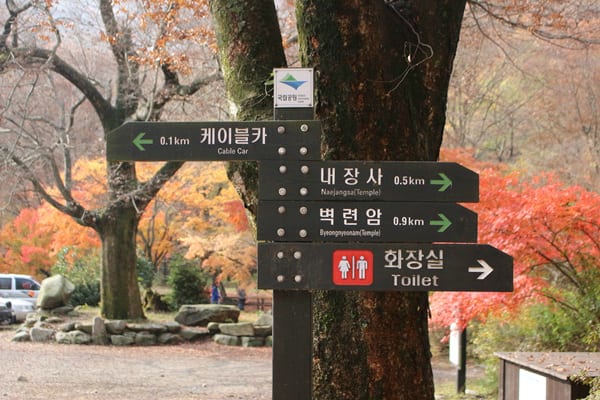
The journey to the temple is a brief 5-minute stroll, and the scenery is so captivating and picturesque that you’ll find yourself constantly pausing to capture the beauty with your camera!
The path to the temple is a short, 5-minute walk, and the landscape is so enchanting and picturesque that you’ll frequently pause to capture its beauty with your camera!
Top 3 Attractions in Naejangsan National Park
1. Naejangsa Temple
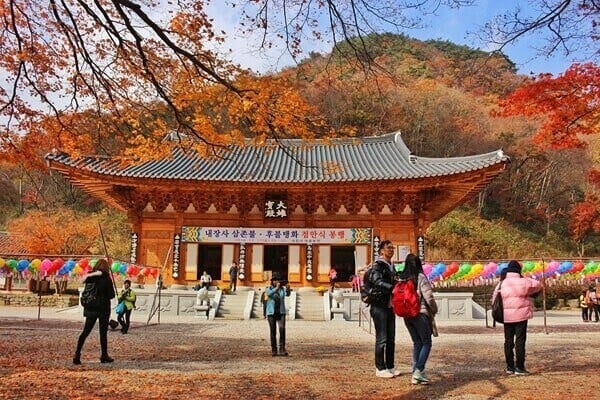
Following a relaxed 5-minute stroll from the park’s entrance, you’ll find yourself at Naejangsa Temple. The ground and trees are blanketed in a layer of fallen leaves, and there’s a serene pond adorned with statues that release streams of water. Korean Buddhist temples also feature “Yaksuteo” wells, from which fresh and potable water flows, and you can quench your thirst using the provided plastic cups.
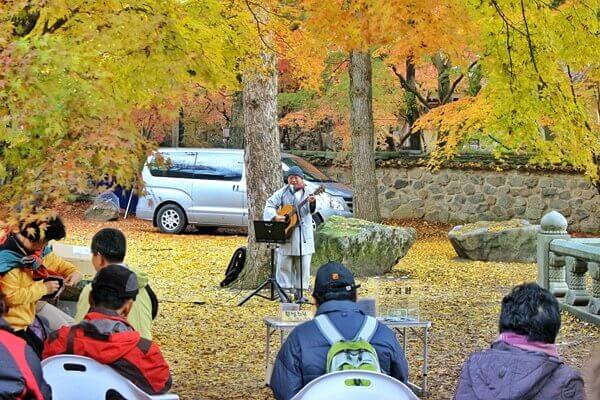
The pinnacle of the experience was a monk’s captivating singing performance. He delivered a pop song with a voice that could rival the likes of Pavarotti or Bocelli. His talent was truly astounding.
| Best photo spots at Naejangsa Temple
- The Illjumun Gate holds symbolic significance as it serves as the gateway to the Buddhist temple and offers an excellent backdrop for group photographs.
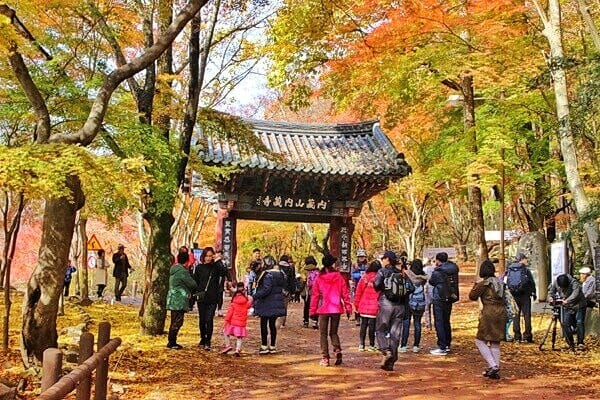
- The lanterns, situated at the temple’s entrance, captivated me with their vibrant colors and created an ideal photographic backdrop as they gently swayed in the breeze.
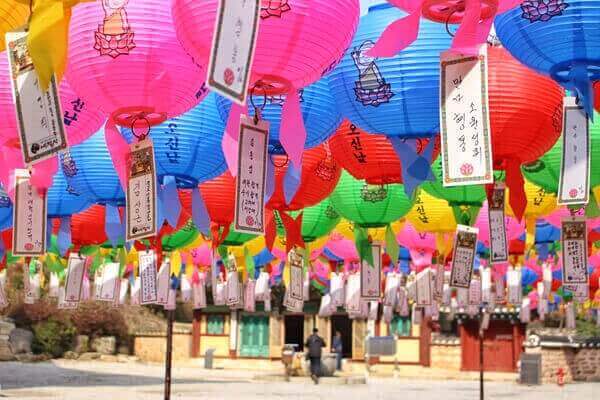
- Baekyangsa Temple, established during the Baekje Dynasty in 632 C.E., offers a wonderful opportunity to leisurely stroll amidst the autumn splendor of Naejangsan National Park.
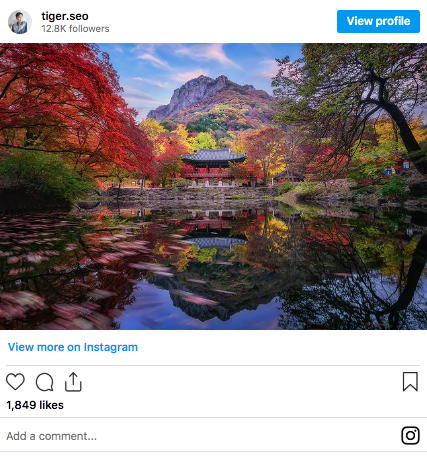
- The resting area was a popular spot for visitors to relax and take a break. Stairs led to an elevated platform where many were busy snapping photos. Here, photographers often positioned themselves to capture the lush foliage, framing their subjects in the center of the shot.
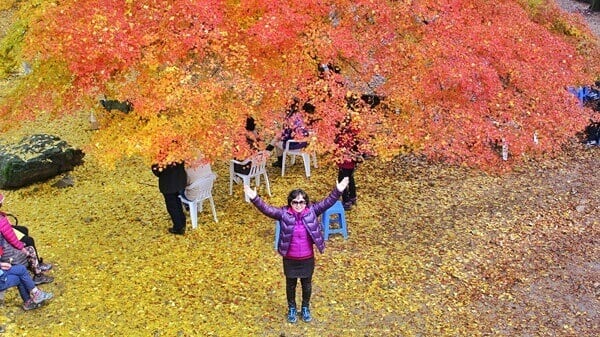
2. Uhwajeong Pavilion
| Best Photo Spots at Uhwajeong Pavilion:
1) Stone path: I noticed many people taking photos on the stone path leading to the pavilion. They would stand in a line and pop their heads out in alternative directions while flailing their arms, which made for a cute photo.
2)When capturing the pavilion from a distance, it resembled a picturesque scene straight from a postcard. The lush foliage, the surrounding trees, and the gentle rays of sunlight all contributed to this enchanting effect.
3. Sinsun Waterfall
Downstream from Uhwajeong Pavilion, you’ll find Sinsun Waterfall, a historically significant riverbank where Japanese and Korean soldiers once clashed. To restore this aged river, natural stones were carefully stacked. Regrettably, during my visit, I couldn’t witness the water flowing out, but when it does, the sight is truly magnificent!
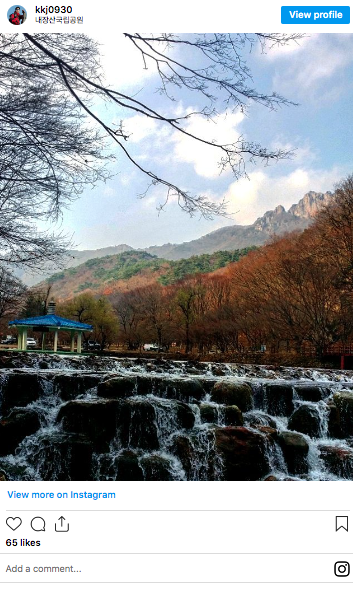
- Sinsun Waterfall and Uhwajeong Pavilion The presence of Uhwajeong Pavilion peeking from behind the waterfall creates an ideal photographic opportunity, with the pavilion appearing like a miniature masterpiece in the background, framed by the cascading waters.
Dynasty Korea Survival Tips – Know Before You Go!
| Opt for comfortable footwear. I personally wore combat boots that were reasonably comfy, but sneakers would be a better choice. If you’re planning on tackling the more challenging trails, consider wearing hiking shoes.
| Consider skipping the cable car, unless you’re prepared to spend a good two or three hours waiting. Exploring the park on foot is a much more enjoyable way to spend your time.
| Stick to Bibimbap if you prefer milder flavors. One of the tourists in our group ordered a bean paste soup, only to find it had an intensely robust taste resembling ‘cheonggukjang,’ a fermented soybean paste known for its pungent aroma.
| Avoid weekends if possible. Heading to the park on a Friday may lead to increased traffic when returning in the evening, but this is quite common.
Review on ‘Korea Autumn Foliage 1 Day Tour
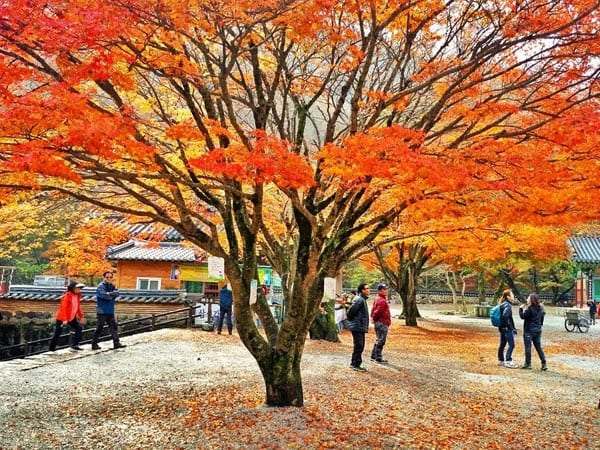
The day trip to Naejangsan National Park with Trazy’s tour was truly delightful. The trail was pleasantly easy, and we were blessed with fantastic weather. I managed to capture numerous stunning photographs and even squeezed in a bit of exercise. In retrospect, I do wish I had visited earlier, as Naejangsan’s foliage typically reaches its zenith between late October and mid-November. Additionally, heavy rain the day before had caused many leaves to carpet the ground. If you’re considering a visit to Naejangsan National Park for its autumn foliage, I highly recommend planning your trip for the period between late October and mid-November.

